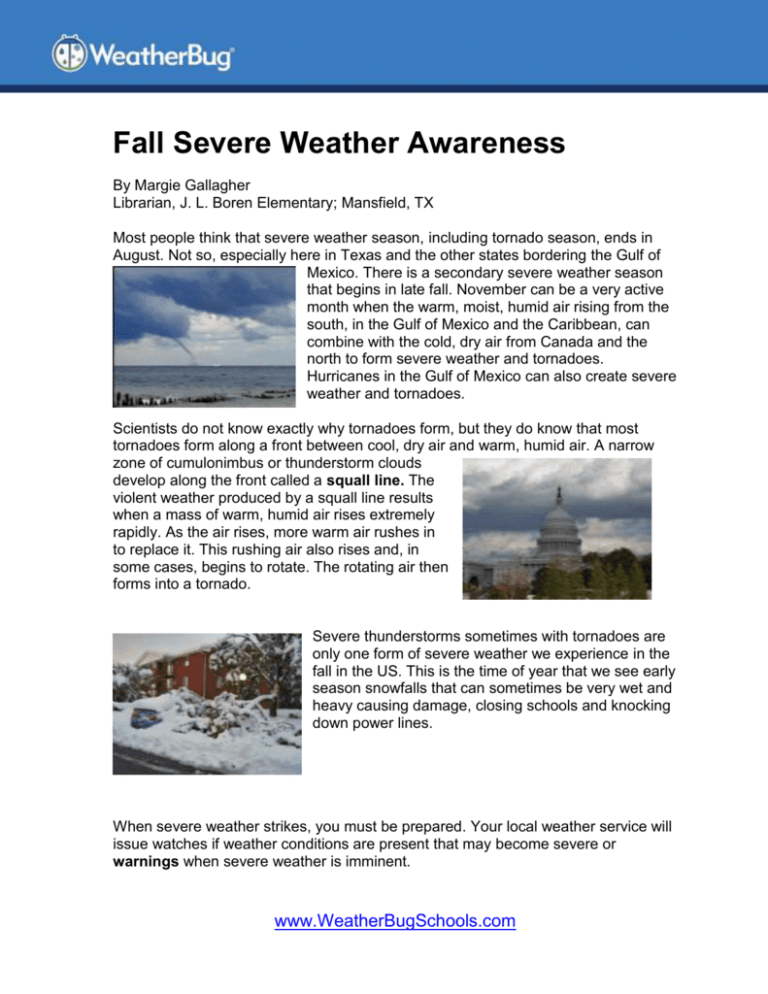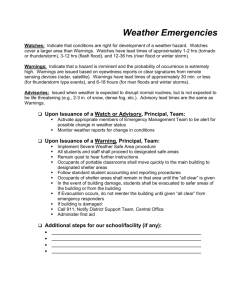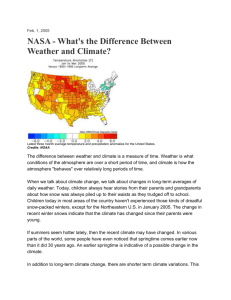The swirling fog covered the field like a thick, gray blanket while
advertisement

Fall Severe Weather Awareness By Margie Gallagher Librarian, J. L. Boren Elementary; Mansfield, TX Most people think that severe weather season, including tornado season, ends in August. Not so, especially here in Texas and the other states bordering the Gulf of Mexico. There is a secondary severe weather season that begins in late fall. November can be a very active month when the warm, moist, humid air rising from the south, in the Gulf of Mexico and the Caribbean, can combine with the cold, dry air from Canada and the north to form severe weather and tornadoes. Hurricanes in the Gulf of Mexico can also create severe weather and tornadoes. Scientists do not know exactly why tornadoes form, but they do know that most tornadoes form along a front between cool, dry air and warm, humid air. A narrow zone of cumulonimbus or thunderstorm clouds develop along the front called a squall line. The violent weather produced by a squall line results when a mass of warm, humid air rises extremely rapidly. As the air rises, more warm air rushes in to replace it. This rushing air also rises and, in some cases, begins to rotate. The rotating air then forms into a tornado. Severe thunderstorms sometimes with tornadoes are only one form of severe weather we experience in the fall in the US. This is the time of year that we see early season snowfalls that can sometimes be very wet and heavy causing damage, closing schools and knocking down power lines. When severe weather strikes, you must be prepared. Your local weather service will issue watches if weather conditions are present that may become severe or warnings when severe weather is imminent. www.WeatherBugSchools.com You can use WeatherBug Achieve to track severe weather watches and warnings. The Storm Display tool displays weather watches and warnings for your area or the entire US. Students can use knowledge of the counties in the area to determine if there is a warning or watch that could affect the area. Find a state with a weather warning or watch. 1. How many counties in that state currently have weather watches, warnings, or advisories issued? ______________ 2. If watches, warnings or advisories have been issued, list 3 of the counties and the advisory. County: ___________________ Advisory: _______________________ County: ___________________ Advisory: _______________________ County: ___________________ Advisory: _______________________ 3. Name the states that border the state you have chosen. 4. What is the western most county in the state you chose? _____________ Extra!!! If you were going to drive from your own state to the state you chose, how many states would you have to drive through to get there? Chose the most direct route with the least number of states You need to be familiar with the counties in your area to know if severe weather is approaching. Use a local map or go to the following website to find maps of the counties in your state: http://www.naco.org/Template.cfm?Section=Find_a_County&Template=/cffiles/count ies/usamap.cfm www.WeatherBugSchools.com


